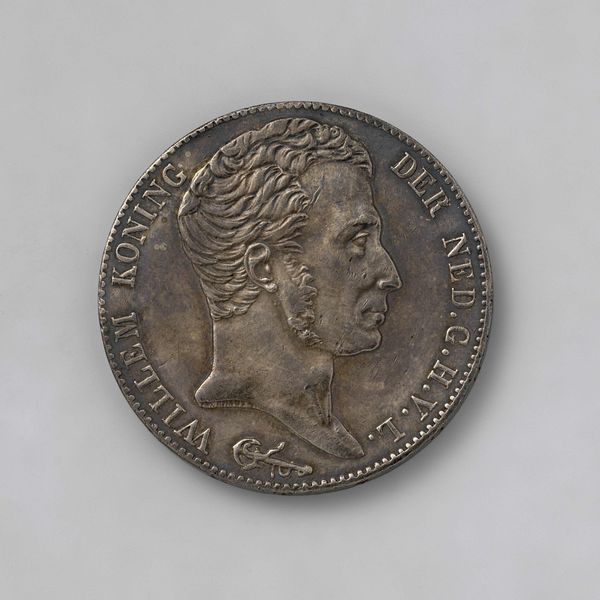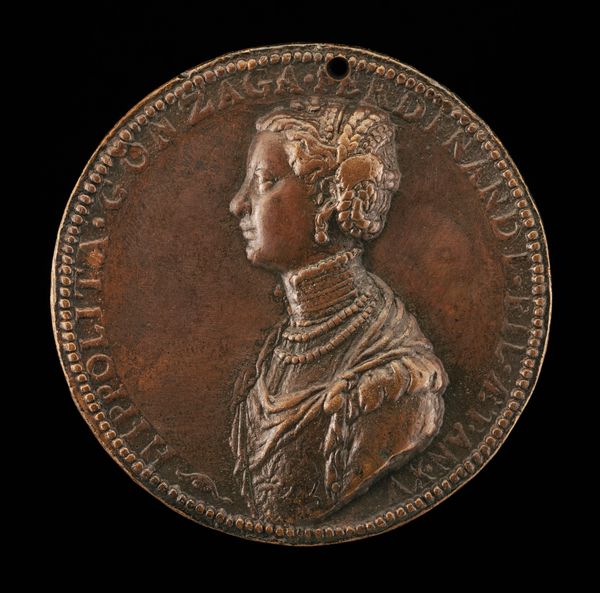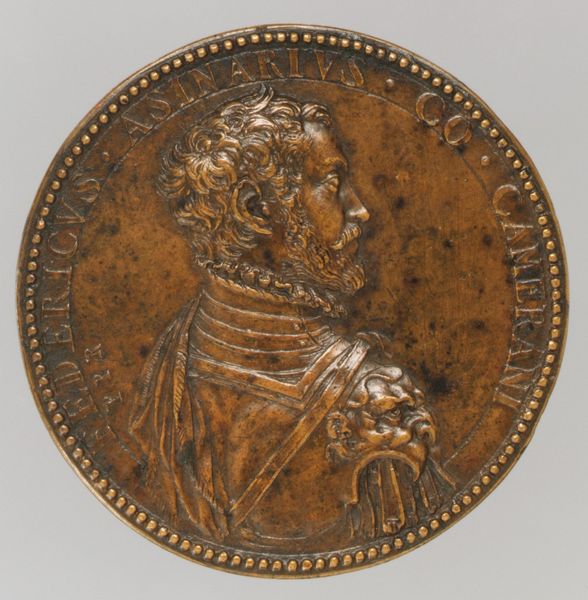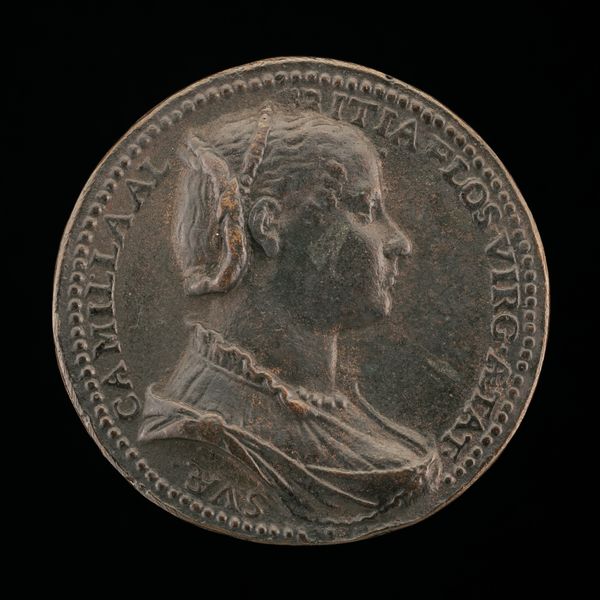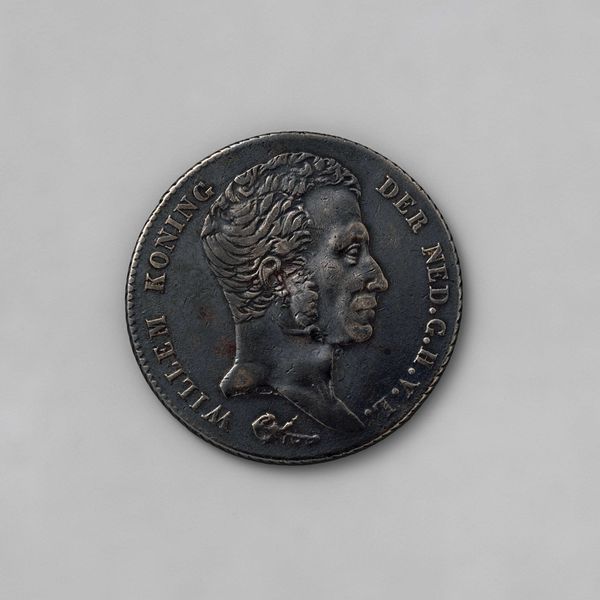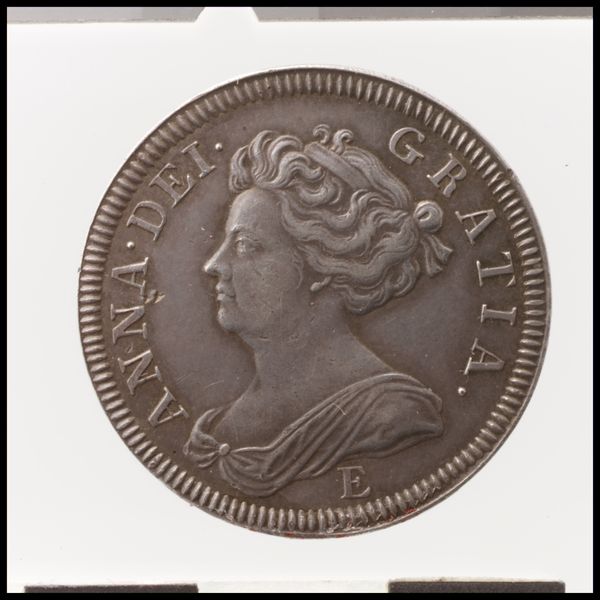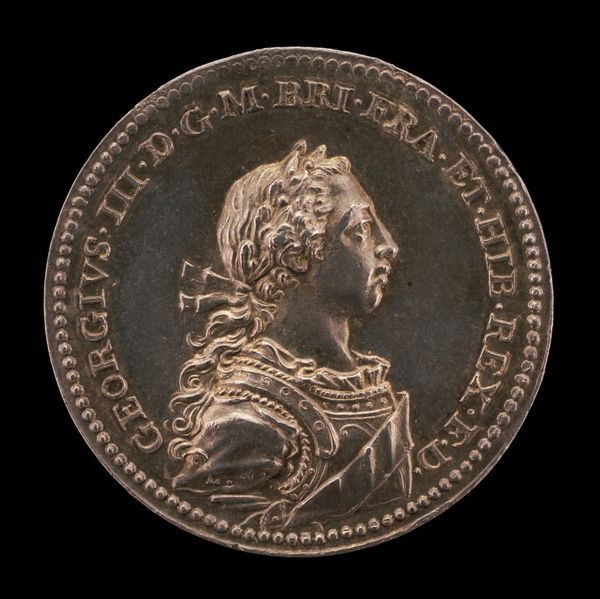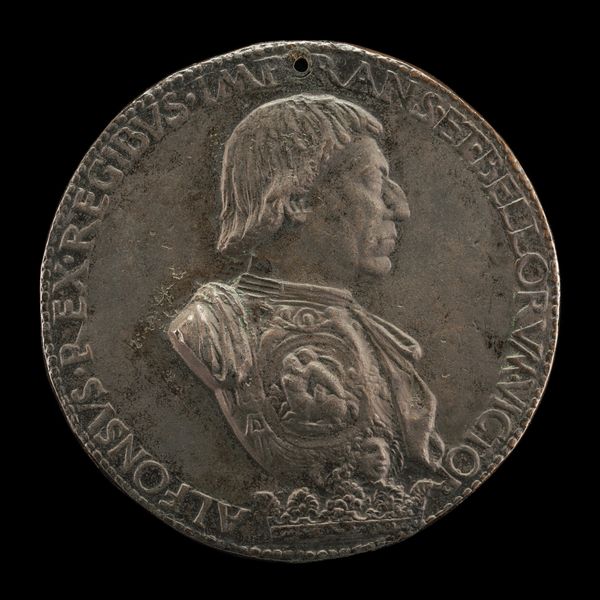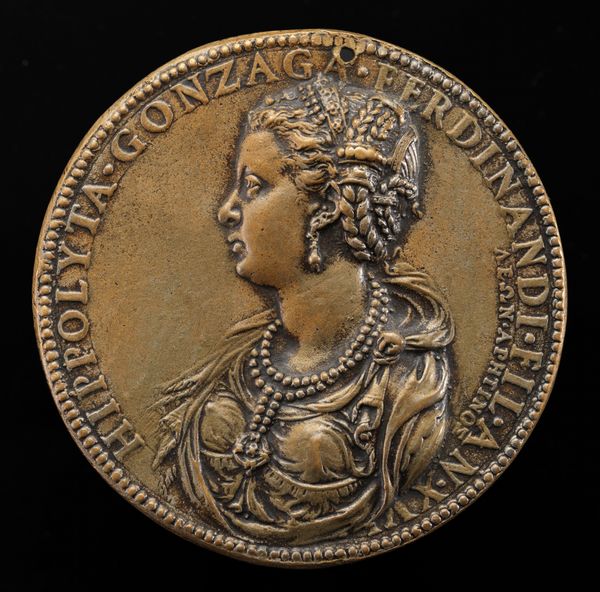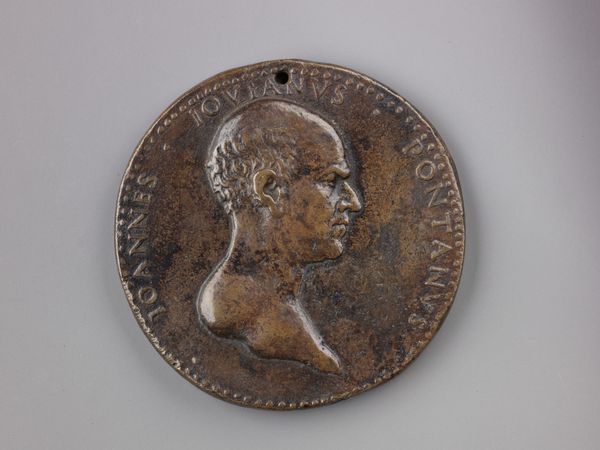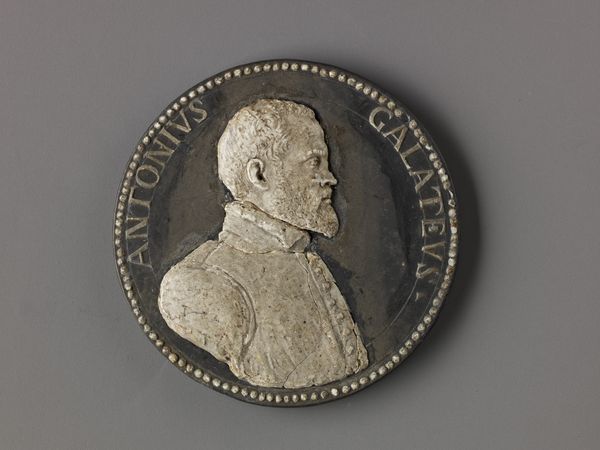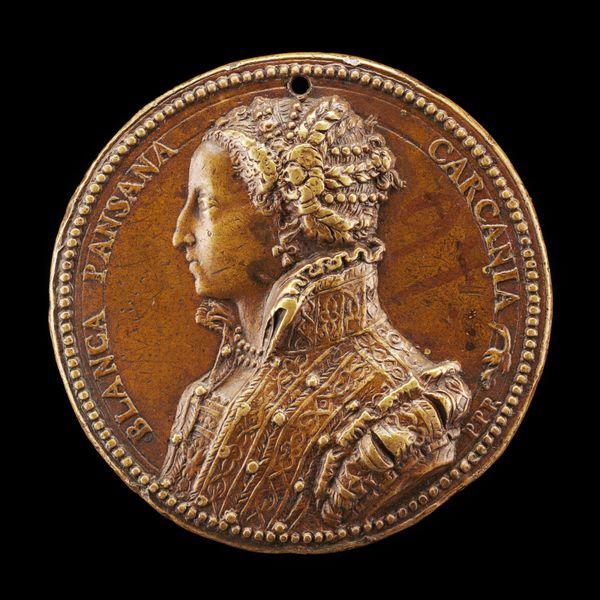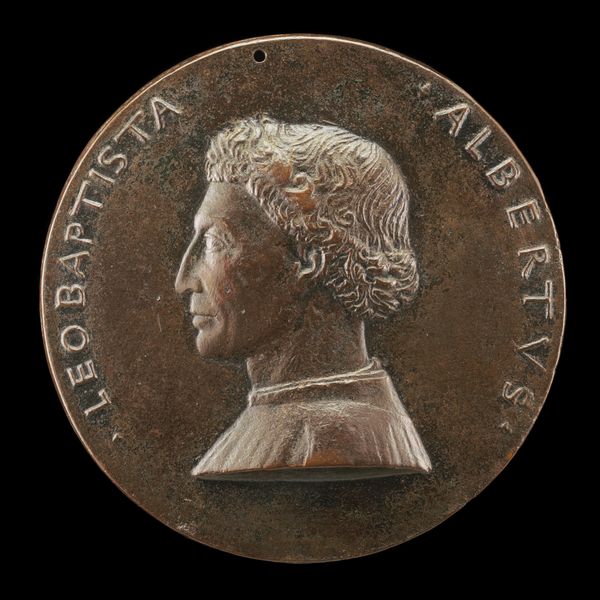
print, metal, sculpture, engraving
#
portrait
#
neoclacissism
# print
#
metal
#
sculpture
#
sculpture
#
engraving
#
realism
Dimensions: diameter 4.0 cm, weight 32.28 gr
Copyright: Rijks Museum: Open Domain
Editor: Here we have a Dutch 3 Gulden coin from 1819, showcasing Willem I. It’s incredible how a simple coin can encapsulate so much. What do you make of this particular piece, considering its historical context? Curator: It's a fascinating artifact! Coins like these are far more than mere currency; they're potent symbols of power and legitimacy. Consider the socio-political landscape of the Netherlands at the time. Willem I had only recently become King after the Napoleonic era. How do you think this portrait of him serves the purpose of solidifying his image? Editor: I see your point. The profile view, reminiscent of Roman emperors, projects an image of strength and stability, something the Netherlands probably desperately needed after such upheaval. It’s almost… advertising, in a way? Curator: Precisely! And it goes beyond the individual portrait. Think about the broader distribution and circulation of these coins. They were handled by people from all walks of life. How do you think this widespread visibility would have impacted public perception of the monarchy? Editor: It must have been a constant reminder of the King's presence and authority, subtly shaping public opinion and acceptance of his rule. It's not just about the artistry, but about control and social messaging. Curator: Exactly! And consider the symbolic weight of precious metals themselves. This coin isn't just an image of Willem I; it embodies the wealth and power of the state. It makes me wonder, what other everyday objects can tell us about the flow of history? Editor: This has been insightful! Looking at something as simple as a coin in this new way allows one to read history from the object. Thanks!
Comments
No comments
Be the first to comment and join the conversation on the ultimate creative platform.
